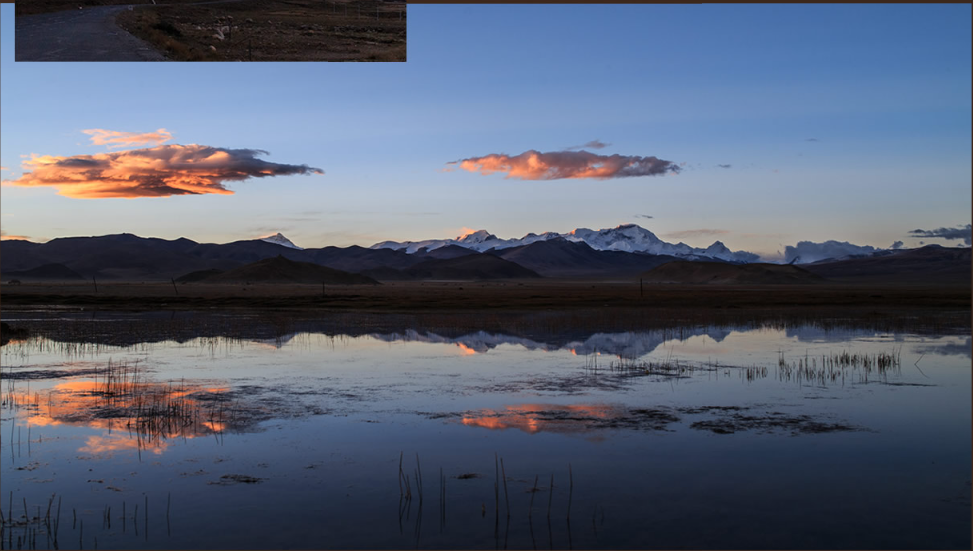Tibet Antisolar (Anticrepuscular) Rays - OPOD
Tibet Antisolar (Anticrepuscular) Rays - OPOD
Tibet, with its breathtaking landscapes and high altitudes, offers a unique opportunity to witness the mesmerizing phenomenon of antisolar rays. These captivating rays, also known as anticrepuscular rays, create a spectacle in the sky that is a treat for the eyes. While the term "anticrepuscular" is commonly used, the more accurate name for these rays is "antisolar," as they appear to converge towards the antisolar point.
When observing antisolar rays, it's important to note that they are not actually converging but appear so due to the effects of perspective. Similar to how parallel railroad tracks or ploughed fields seem to converge in the distance, these rays create an illusion of convergence. This phenomenon adds to the beauty and intrigue of antisolar rays.
One fascinating aspect of antisolar rays is that they paradoxically brighten as they approach the antisolar point. This phenomenon occurs because, at this point, the camera is looking more directly along the length of the rays, allowing it to capture a longer path through the sunlit air. This longer path results in a greater amount of scattered sunlight reaching the observer's eyes, enhancing the brightness of the rays.
The enchanting play of light and shadow continues as the antisolar rays extend into the sky above iconic landmarks such as Mount Everest and Cho'oyo. Bathed in the warm glow of alpenglow, these majestic peaks become even more awe-inspiring when accompanied by the ethereal presence of antisolar rays. The combination of natural wonders creates a scene that is truly unforgettable.
It is worth noting that Tibet's unique atmospheric conditions contribute to the frequent occurrence of antisolar rays in this region. The high altitude and clean air provide an ideal environment for these phenomena to manifest. Visitors to Tibet often have the privilege of witnessing these captivating displays on a regular basis, adding to the allure of this already stunning destination.
To capture the beauty of antisolar rays in Tibet, photographers like Jeff Dai venture to locations such as Lake Peiku-Tso, situated at an altitude of 4600 meters near Shishapangma, the world's 14th highest mountain. Jeff Dai's images serve as a testament to the remarkable sky conditions found in Tibet, where he encountered antisolar rays nearly every day during his trip in October 2014. His photographs showcase the sheer grandeur of these rays and highlight their prominence in the Tibetan sky.
In conclusion, Tibet's remarkable atmospheric optics phenomenon, known as antisolar rays or anticrepuscular rays, offers a visual spectacle that captivates observers. The illusion of convergence, the paradoxical brightening as they approach the antisolar point, and their presence amidst iconic landmarks all contribute to the allure of these rays. Tibet's unique atmospheric conditions make it an ideal location to witness and appreciate the beauty of antisolar rays. For those fortunate enough to experience this phenomenon firsthand, it is an awe-inspiring display of nature's wonders.

Antisolar Rays, Tibet, China
Imaged by Jeff Dai at Lake Peiku-Tso 4600m altitude near Shishapangma the world's 14th highest mountain. "Tibet offers amazing sky conditions, I enjoyed anticrepuscular rays nearly every day during my trip on October. 2014". Images ©Jeff Dai

Left:
Mount Everest with antisolar rays crossing the sky.
The rays apparently converge towards the antisolar point. They are thus better called antisolar rays rather than anticrepuscular.
They are, of course, parallel. Perspective has them converge, like railroad tracks, roads and ploughed fields.
The rays paradoxically brighten as they approach the antisolar point and also get more distant. The camera is then looking more directly along their length and seeing a longer path through their sunlit air.
Below:
Everest and Cho'oyo bathed in Alpenglow with antisolar rays above them.

Note: this article has been automatically converted from the old site and may not appear as intended. You can find the original article here.
Reference Atmospheric Optics
If you use any of the definitions, information, or data presented on Atmospheric Optics, please copy the link or reference below to properly credit us as the reference source. Thank you!
-
<a href="https://atoptics.co.uk/blog/tibet-antisolar-anticrepuscular-rays-opod/">Tibet Antisolar (Anticrepuscular) Rays - OPOD</a>
-
"Tibet Antisolar (Anticrepuscular) Rays - OPOD". Atmospheric Optics. Accessed on December 26, 2024. https://atoptics.co.uk/blog/tibet-antisolar-anticrepuscular-rays-opod/.
-
"Tibet Antisolar (Anticrepuscular) Rays - OPOD". Atmospheric Optics, https://atoptics.co.uk/blog/tibet-antisolar-anticrepuscular-rays-opod/. Accessed 26 December, 2024
-
Tibet Antisolar (Anticrepuscular) Rays - OPOD. Atmospheric Optics. Retrieved from https://atoptics.co.uk/blog/tibet-antisolar-anticrepuscular-rays-opod/.